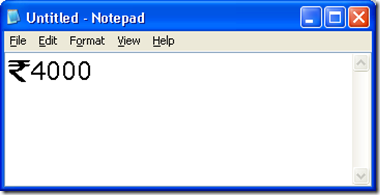Sep 1, 2010 direct tax code
Once the Direct Taxes Code (DTC) 2010 get approved by both houses of the Indian parliament, and receives the President's assent, it would be enacted as law. Significantly, while it was earlier envisaged that as per the original proposal the DTC would be effective from 1 April 2011, the start date of DTC 2010 has now been deferred by a year to 1 April 2012.
The DTC 2010 proposes substantial changes to the current direct tax legislation and is likely to have significant impact on the business community. The business community would do well to assess the impact on their current structures and business models. It is widely expected that the DTC 2010 would be referred to a Parliamentary Committee for further deliberations and the Committee would have one more round of public consultation.
Key proposals of the Direct Taxes Code (DTC) 2010 are as follows:-
1. Tax Rates for individuals
The basic exemption limit for individuals has been increased to INR 200,000 under the DTC 2010 when compared with INR 160,000 under the Income-tax Act, 1961 (ITA) as well as under the DTC 2009 proposal. For a senior citizen, this exemption limit is enhanced to INR 250,000. The subsequent slab rates provide only marginal relief and are as follows:
- 10% on the subsequent income level of INR 200,000 to 500,000
- 20% on the next INR 500,000 to INR 1,000,000
- 30% on income in excess of INR 1,000,000
2. Tax rates for companies
Tax rate in case of companies is proposed at 30%. It may be recalled that the DTC 2009 had earlier proposed a tax rate of 25%. 30% is also the tax rate for most of the other taxable entities including partnership firms, Limited Liability Partnerships (LLPs) and unincorporated entities.
While a domestic company is required to pay a dividend distribution tax (DDT) of 15% on dividends declared, distributed or paid, a foreign company is required to pay an additional branch profits tax of 15%.
Dividend income on which DDT is paid is exempt in the hands of the recipient shareholder.
3. Scope of Total income and computation provisions
Scope of Total Income
The DTC 2010 continues with the present system of combination of residence- based taxation and source-based taxation. It also seeks to continue to apply residence-based taxation to residents i.e. global taxation and source-based taxation to non residents.
It may be recalled that the earlier draft of DTC 2009, had proposed to modify the test for determining the residence of a company by providing that, the existence of even 'partial' control and management would result in residence in India. In view of recommendations against having such a low threshold, the Revised Discussion Paper (RDP) proposed an alternative test of treating a company incorporated outside India to be a resident in India if its 'place of effective management' (POEM) is situated in India. The DTC 2010 incorporates this provision.
The DTC 2009 had proposed an expansion in source of income rule to make indirect transfer of a capital asset situated in India taxable in India. The DTC 2010 reverts to the provisions contained in the current law with regard to the source of income for such a transfer. However, even though not specifically treated as taxable, the DTC 2010 seeks to exclude from taxation, income from transfer outside India, of any share or interest in a foreign company if the value of assets in India represents less than 50% of the value of assets held by the foreign company.
The DTC2010 replaces the present dual concept of 'previous year' and 'assessment year' with the unified concept of 'financial year'.
Computation of Total Income
The DTC 2010 classifies incomes into two categories viz. 'special sources' and 'ordinary sources'. The special sources (specified in a separate Schedule) generally reflect items like Royalty, Fees for Technical Services (FTS), investment income etc. All other sources of income will be ordinary sources. Special sources would be subject to tax on the gross amount.
The Total Income of the taxpayer for a financial year will be the aggregate of 'Total Income from ordinary sources' and 'Total Income from special sources'.
Computation of income from employment and house property
The computation of income from employment and house property as was proposed in the RDP, is largely sought to be retained in the DTC 2010.
The draft DTC had proposed to introduce Exempt Exempt-Taxation (EET) method of taxation of contributions made towards certain retirement benefits, under which, contributions and annual accumulations into specified funds are not taxed, but withdrawal from the same, is taxed.
The RDP proposed to continue with the EEE method of taxation for Government Provident Fund, Public Provident Fund and Recognised Provident Fund and the pension scheme administered by Pension Fund Regulatory and Development Authority and reinstate certain allowances as was available in the ITA. These proposals have been given effect to under the DTC 2010.
Computation of income from business
An important change proposed by the DTC 2009 under this head of income is that every business will constitute a separate source of income, necessitating separate computation of income for each business. This proposal is retained under the DTC 2010. Accordingly,
- All assets are classified into business assets and investment assets. The business assets are further classified into business trading assets and business capital assets.
- Income from transactions in all business assets will be taxed under the head 'income from business' while income from transactions in all investment assets will be taxed under the head 'capital gains'.
- The profits from business will be computed by deducting business expenditure from gross earnings of the business.
- Gross earnings will ordinarily include all accruals and receipts derived from or connected with business assets, whether trading or capital.
- Business expenditure will be classified into 3 mutually exclusive categories (i) Operating expenditure (ii) Permitted financial charges (iii) Capital allowances.
- The benefit of weighted deduction at 150% proposed in the DTC 2009 has been enhanced to 200% for any expenditure (both revenue and capital except land and building) incurred on in house scientific research and development by a company is proposed for all industries (not restricted to manufacturing).
- As a disincentive for asset stripping and loss manipulation, the DTC 2009 proposed that loss on sale of business capital assets will be treated as an intangible asset on which depreciation will be allowed at the rates applicable to the relevant block of assets, which will effectively result in allowance of such loss on amortized basis. This provision has been dropped in DTC 2010. Hence if there is a loss, the same is to be ignored.
Computation of Capital Gains
The concept of 'investment asset' is made applicable to any undertaking or division of a business. As a result, slump sale would now be capital gain income unlike the earlier proposal of DTC which sought to tax it as business income
The term 'investment asset' also includes within its ambit any security held by a Foreign Institutional Investor (FII).
Any capital gains arising from transfer of investment assets would be taxable at normal rates applicable to the resident taxpayer, while it will be taxed at 30% for non-residents.
In line with the RDP proposal, there will be no withdrawal of Securities Transaction Tax (STT). Capital gains on sale of shares in a company or equity oriented units held for over a year, subject to STT will be exempt. In case of other capital gains, a standard deduction of 50% is provided for and effectively, the tax rate for individual could be 5%, 10% or 15% depending on the slab rate, and for companies, the rate could be 15%.
Similar to the ITA, the indexation benefit is now based with respect to year of acquisition of asset as against, the year following the financial year of acquisition provided in DTC2009.
Capital loss is ring-fenced and an indefinite carry-forward period is provided for. Losses from any other source are available for set-off against capital gains income.
Similar to the existing provisions of the ITA, conversion of private company/unlisted company into LLP is tax exempt, on satisfaction of prescribed conditions.
4. MAT computed with reference to book profits
Minimum Alternate Tax (MAT) of 20% applies to a company in case book profits are higher than taxable profits
The DTC 2009 had proposed to levy a MAT based on 'asset base'. This however, had raised strong apprehensions in corporate circles. In view of the same, the RDP proposed that the current approach in the ITA of levying MAT with reference to 'book profit' would continue.
In accordance with the above promise, the DTC 2010 proposes a MAT computation that is largely in line with the present computation in the ITA, but with an enhanced tax rate of 20 %. Further, MAT would now be applicable even in case of SEZ developers and units which are presently not subject to MAT under the ITA.
However, MAT credit is allowed to be carried forward for 15 years as against the existing limit of 10 years under the ITA.
5. Profit linked incentives to continue under grandfathering provisions for SEZ units and SEZ developers
The deduction in respect of units established in the SEZ unit under the ITA, will continue to be allowed a profit linked deduction under the DTC 2010, if the taxpayer, begins to manufacture or produce articles or things or provide any service in the unit in the SEZ on or before the 31 March 2014, subject to the certain conditions.
In respect of a SEZ developer, the deduction under the ITA notified on or before 31March 2012 will continue to be allowed a profit linked incentive.
However, a SEZ developer notified after 31 March 2012 will be eligible to claim investment linked deduction, as contemplated under the DTC 2009 proposals.
6. Anti- Abuse provisions
Transfer pricing (TP) and Advance Pricing Agreements (APAs)
The TP provisions contained in the DTC are broadly similar to that contained in the ITA.
It may be recalled that the DTC 2009 had proposed a 10% voting power threshold for being regarded as Associated Enterprises (AEs). The DTC 2010 now reverts to the existing ITA provisions of 26% voting power as the threshold. However, the definition of AEs has been expanded. The DTC 2010 has further included two more criteria to the definition of the AE which is as follows:
- Provision of services by one enterprise to another either directly or indirectly and the conditions thereto are influenced by such other enterprise
- any specific or distinct location of either of the enterprises as may be prescribed
DTC 2010 also introduces Advance Pricing Agreements (APAs). APA is an arrangement that determines, in advance of controlled transactions, an appropriate set of criteria (e.g. method, comparables and appropriate adjustments thereto, critical assumptions as to future events) for the determination of the transfer price for those transactions over a fixed period of time. The DTC empowers the tax administrative authority, Central Board of Direct Taxes (CBDT), with the approval of the Government of India (GOI), to determine the ALP in relation to such international transactions.
The ALP determined will be subjected to the safe harbor rules. 'Safe harbor' is defined to mean circumstances in which the tax authorities shall accept the transfer price declared by the taxpayer.
GAAR
The DTC 2009 proposed to introduce GAAR as a deterrent and a tool against tax avoidance. GAAR is a broad set of provisions that has the effect of invalidating an arrangement that has been entered into by a taxpayer with the main objective of obtaining a tax benefit. The tax authority in such cases is granted the power to adjust the assessment of the taxpayer so as to counteract the attendant tax advantage.
GAAR was strongly objected to on account of its sweeping nature and granting of vast powers to tax authority to invoke GAAR arbitrarily. There were also no legislative and administrative safeguards for genuine taxpayers against abusive use of GAAR by a tax authority.
The RDP proposed the following safeguards for invoking GAAR:
- Issue of guidelines by the Indian administrative authority to provide for the circumstances under which GAAR may be invoked
- To be invoked only where tax avoidance is beyond a specified threshold
- Availability of Dispute Resolution Panel (DRP) forum
The DTC 2010 essentially retains the GAAR provisions as proposed in the original DTC 2009, but has incorporated some of the enabling provisions to carry out the proposed safeguards. However, the threshold has not been specified.
Controlled foreign company (CFC) regime
The CFC proposal was not part of the original DTC proposal of 2009. The GOI for the first time in the RDP indicated a proposal to introduce a CFC regime. A CFC regime is an anti-avoidance measure aimed to provide for taxation of passive income earned by a foreign company that is directly or indirectly controlled by a resident in India. This income is not distributed to its shareholders resulting in deferral of taxes. Under the proposed CFC regime, this income is deemed to have been distributed and therefore taxed in the hands of the resident shareholders as dividend received from the foreign company.
DTC 2010 incorporates provisions for computation of income attributable to a CFC. The income is thereafter included in the income of a resident taxpayer. A foreign corporation which has a tax rate of less than 15% (i.e. 50% of the rate applicable to an Indian company) is classified as a CFC.
The CFC regime applies to a resident that fulfills individually or collectively any of the following criteria in a direct or indirect manner:
- any specific or distinct location of either of the enterprises as may be prescribed
- Holds at least 50% of voting power or capital of the CFC
- Has the power to secure application of 50% of income or assets of the CFC for its benefit.
- Has the ability to exercise dominant influence on the CFC due to a special contractual relationship
- Exerts decisive influence on the shareholder meeting
There are certain CFC provisions that do not apply if the CFC satisfies certain conditions such as, it is a listed entity, is engaged in active trade or business, tainted income of CFC is less than INR 2.5 million.
7. Relief from double taxation and foreign tax credit (FTC)
The present ITA enables a taxpayer to choose between a tax treaty and the ITA, whichever is more beneficial to it. The DTC2009 sought to redefine this relationship by providing that neither a tax treaty provision nor a DTC provision shall have a preferential status by reason of it being a tax treaty or domestic tax law, and that the provision that is later in point of time shall prevail.
The RDP proposed to revert to the provisions of the existing ITA and this finds place in the DTC2010. Also, certain safeguards as suggested in the RDP have also been introduced to clarify that this rule of whichever is beneficial to the taxpayer, will not apply when GAAR is invoked. Further CFC provisions and BPT levy will continue to apply to the taxpayer irrespective of beneficial tax treaty provisions.
A resident in India is permitted to claim credit of taxes paid or withheld in other jurisdictions against the taxable income under the DTC 2010, subject to tax treaty provisions, if any.
Where no tax treaty exists, FTC can be claimed only at the lower of the tax rate under the DTC2010 and the tax rate levied by the other jurisdiction. However, the FTC cannot exceed the tax payable under the DTC 2010.
Further, the DTC 2010 provides for the GoI to prescribe the method of computing FTC, as well as the manner of claiming FTC. One would therefore need to wait and watch for these developments.
8. Tax on net wealth
The taxation on net wealth basis at 1% of net wealth has been extended to almost every person where net wealth exceeds INR 10 million (Considerably enhanced from the existing INR 3 million).
The meaning of assets has been broadened to include helicopter, archaeological collections, drawings, paintings, sculptures, or any other work of art, watch having value in excess of INR 50,000, any equity or preference shares held by a resident in CFC etc.
Further, wealth tax would be required to be discharged by way of pre-paid taxes under the DTC 2010. The various other provisions such as clubbing of income, exemptions, largely are in line with the present WTA.
9. Advance rulings and dispute resolution
The DTC 2010 provides for the GoI to constitute an Authority for Advance Rulings and Dispute Resolution (Authority) as the name suggests for the purposes of pronouncing advance rulings and resolve disputes.
The persons eligible to apply before the Authority could be a non-resident, a resident, class of residents as notified by the GoI, a public sector company or the tax authority. The ruling pronounced by the Authority on a said transaction shall be binding on the applicant as well as the tax authority. However, the ruling will not bind in case of change of law or facts. Further, no tax authority or Tribunal can determine any matter which is pending before such Authority.
Read more: http://www.taxguru.in/direct-tax-code/summary-of-key-proposals-of-the-direct-taxes-code-dtc-2010-at-one-place.html
 Step 2.
Find the photos you plan to burn to the CD.
Step 2.
Find the photos you plan to burn to the CD.
 Step 3.
Insert a blank CD into your CD-burning drive. A window should pop up to ask how to open the CD. Choose "Open Writable CD Folder Using Windows Explorer".
Step 3.
Insert a blank CD into your CD-burning drive. A window should pop up to ask how to open the CD. Choose "Open Writable CD Folder Using Windows Explorer".
 Step 4.
You should now have two windows open: The one where you have the pictures you want to burn, and the one with the writable CD folder. Click and drag the names of the photos you want to copy over to the writable CD folder.
Step 4.
You should now have two windows open: The one where you have the pictures you want to burn, and the one with the writable CD folder. Click and drag the names of the photos you want to copy over to the writable CD folder.
 Step 5.
Once you're done clicking and dragging the files you want to copy over to the writable CD folder, click "Write these files to CD".
Step 5.
Once you're done clicking and dragging the files you want to copy over to the writable CD folder, click "Write these files to CD".
 Step 6.
Name the CD then click "Next".
Step 6.
Name the CD then click "Next".
 Step 7.
Wait for the CD writer to finish burning the image to the new CD.
Step 7.
Wait for the CD writer to finish burning the image to the new CD.
 Step 8.
When the "Completed the CD Writing Wizard" window pops up, click "Finish". Your computer will probably pop the CD out automatically.
Step 8.
When the "Completed the CD Writing Wizard" window pops up, click "Finish". Your computer will probably pop the CD out automatically.
 Step 9.
If the CD writing directory is still open, click "Delete temporary files". If you don't see this option, don't worry about it.
Step 9.
If the CD writing directory is still open, click "Delete temporary files". If you don't see this option, don't worry about it.







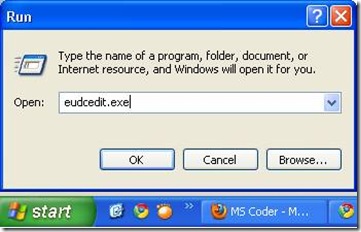
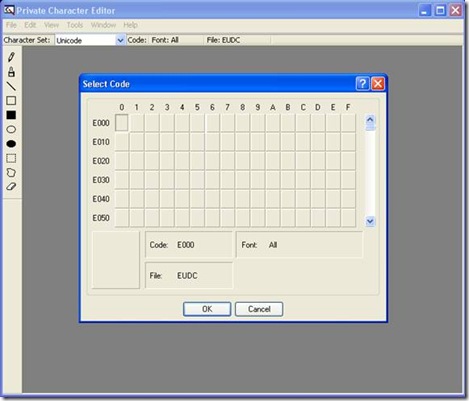
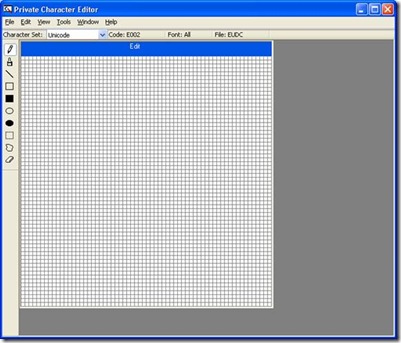
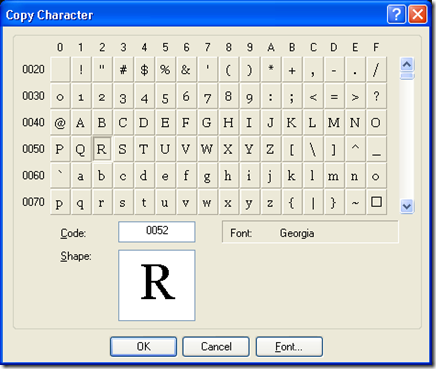
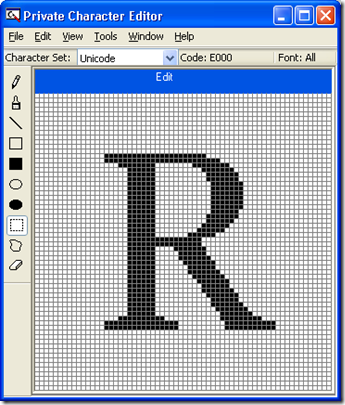
![clip_image002[1] clip_image002[1]](http://mscoder.files.wordpress.com/2010/07/clip_image0021_thumb1.jpg?w=295&h=346)

